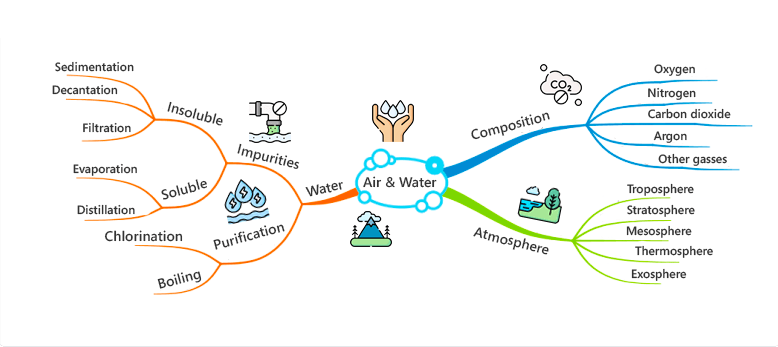Top 5 Memorization Techniques to Improve Your Memory!
Are you experiencing a gradual decline in your memorization? Do you find it challenging to remember a plethora of information? Are you looking to enhance your memorization skills?
You’ve come to the right place! Not all memorization techniques are going to work well for everyone. But there are a number of methods to try! Take a deep dive into this blog post to explore how these top 5 memorization techniques can benefit you and discover the specific tools at your disposal for enhancing your memory.
Learning the best practice memorization techniques can help individuals in various ways. These techniques prove to be of great help. Especially for subjects like science and mathematics, concepts and formulas must be memorized. Here are 5 memorization strategies that you can try:
1.Mnemonics.
Using techniques such as rhymes, acronyms, or visual imagery to remember information in a memorable way is called mnemonics. It’s a way to make memorization fun. In fact, studies suggest enough spelling mnemonics training reshapes your brain networks to support better memory and for reciting information.
For instance, a simple illustration of this technique involves singing your ABCs to music to make them more memorable. Perhaps your art teacher introduced you to “Roy G Biv” as a mnemonic aid to memorize the colours of the rainbow in their correct order: red, orange, yellow, green, blue, indigo, violet. Mnemonics breathe life into memorization, transforming it into an engaging and effective learning process.
2. Chunking.
Break up long pieces of information into manageable parts. This is an easy way to remember information as it is less overwhelming, and you’re able to memorize smaller pieces of information much faster.
The chunking method allows one to retain information longer. It also improves an individual’s ability to identify links and correlations between information. You can memorize a list of words by grouping them according to their meaning. You can also categorize them into groups of nouns, verbs, etc. This learning style can be your best option if you are trying to learn a new language.
This memorization technique can work best when combined with other memory techniques. These other memory techniques include repetition and association. Moreover, the simplicity of this technique makes it easy to be mastered by children.
3. Spaced Repetition.
Rather than trying to memorize a lot of information in one session, consider spacing out your study sessions. Intervals between study sessions allow your brain time to refresh. Spaced repetition can significantly improve your ability to recall information because the more often you come across particular material, the more likely you are to remember it. When using this technique, it's helpful to determine specific times and days that you can dedicate to reviewing your material.
For example, if you are trying to learn new words, you can note down all the terms and then view them after every two hours, six hours, or one day. After a specific time, you can make the intervals systemically longer (five days, one week, etc.).
It is recommended to review the material before the brain forgets it. This way, you can store all the words in your long-term memory.
Spaced repetition reduces the chances of forgetting information. This is because it provides a significant time to store information in the brain. This memorization technique requires consistency and regularity.
4. Flashcards.
Flashcards are a practical study tool to help you learn and review a substantial amount of information quickly. A common way to use flashcards is to place words, concepts, or pictures on one side of the card and add explanations and definitions to the other side. This learning technique helps you prioritize what you need to remember. The flashcards must focus on key information. The repetition of unnecessary information shall be avoided in the learning process.
If you need an “on-the-go” learning technique to memorize things, flashcards are the best solution. Their portability makes them highly convenient.
Tips for using flashcards:
Go through the stack several times.
Shuffle the cards often as you study to avoid predictability.
Create a game using the cards.
5. Mind mapping.
Mind mapping is a visual, non-linear way to organize your ideas and get more clarity. Mind mapping involves the organization of information in the form of a hierarchical structure. This structure contains interconnected branches. The origin of these branches is the central idea, around which all the information is based. The branches from the central idea represent a subtopic or the concepts to be memorized and learned.
You can try this technique by using a piece of paper or a digital device, and writing out a general idea or concept, and then related ideas would be branching off of the original idea. Instead of sentences, one single key word is typically used. This gives you more freedom and creativity to expand on the idea.
Choose the technique that works best for you! A child’s learning style can determine the memorization technique that can work best for them. Moreover, the type of information to be memorized, and the available time can also help in picking the suitable memory technique.
It is encouraged to experiment with different techniques. Because sometimes the combination of one or more memorization techniques can help to learn things. The regular practice of memorization techniques is essential for retaining information. It can also help to keep the brain healthy and functioning. The goal is to make memorization fun and easy to promote learning!
Check out our blog post about Study Tips For Exam Success!
Still struggling with course content and exam technique? You might benefit from hiring a tutor. Follow the link below to find out more:






